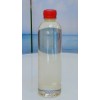在连续不停地增加20年之后,中国的外汇储备在大约一年前开始减少,在2015年8月的危机期间以令人震惊的幅度下降。在许多投资者眼里,这是市场对中国经济政策可信度的信心在降低的标志,中国外汇储备大幅减少现在被列为在全球范围抛售风险资产的主要原因之一。随着中国央行(PBoC)资产负债表缩小,投资者害怕这将在在发达国家债券市场触发“量化紧缩”,并担心中国自身将发生信贷危机。
这些担心并非毫无依据,但人民币仍不大可能遭遇“信心挤兑”。事情将在很大程度上取决于中国官方能否充分摆脱神神秘秘的习惯,在储备、汇率、货币政策和国内银行体系的必要清理等问题上阐明清晰的战略。如果正确的战略浮出水面,那么信心就可以恢复,因为中国远不是一个失去清偿能力的国家。
中国当前的局面是如何形成的?早在2001年,中国的外汇储备便开始增加,在本世纪头十年中期的增速达到约40%。之后外汇储备增速逐渐放缓,在2014年8月达到近4万亿美元的最高点。在这段很长的时期内,中国运行着巨大的经常账户顺差以及私人部门资本盈余,但不希望汇率升高得过快。因此,中国当局通过买入美元和积累外汇储备,使不可避免的汇率升值过程变得平缓。外汇储备的增加与其说是刻意的政策选择,不如说是其他地方政策决定自动引发的结果。
2007年后,人民币实际汇率升高了约40%,到2014年,之前一直惹恼美国和其他海外经济体的持续低估已不存在。这改变了中国的国际收支态势,经常账户顺差从2007年相当于国内生产总值(GDP) 11%的峰值降至GDP的2%。之前把私人资本吸引到中国的利息“套利”交易也开始被解除,因为市场意识到人民币已不再低估,而如果经济硬着陆,那么中国利率将大幅下降。
在过去12个月里,私人部门资本外流的总体步伐是有序的,但仍迫使中国消耗了4000亿美元储备,以防止汇率陡然下跌。只是在8月11日中国央行宣布调整汇率机制、触发市场担心人民币未来再度贬值之后,资本外流才达到危机规模。官方数据显示,8月份中国外汇储备减少了940亿美元。许多分析人士认为,对期货和期权市场的变相干预意味着该月真实的汇率支持力度超过1700亿美元。
显而易见的是,如果这样的消耗速度继续下去,随着中国所持外国债券减少,将对全球资产市场造成重大冲击。另外,当外汇储备减少时,官方抛售美元、买入人民币之举,会降低国内金融体系的本币流动性。尽管在理论上,外汇储备变化对国内流动性的冲击可以被央行的“冲销”行动(比如调整银行存准率)抵消,但在实践中,这种冲销在两个方向上似乎都不是特别成功。
国际货币基金组织(IMF)不久前的研究显示,大规模资本流入经常引发国内信贷爆炸性增长,因此可以合理推断,资本外流有可能在无意中导致中国的国内金融状况收紧。的确,左边的曲线图似乎表明,这种情况已经在发生。
中国的信贷紧缩是否会延续下去,取决于两个因素:私人资本外流的未来走向,以及官方对汇率的态度。资本外流速度越快,中国央行越是坚定地阻止人民币大幅贬值,那么外汇储备的消耗幅度就越大。
有些分析人士乐观地认为,资本外流速度将在不远的将来自动放缓下来。野村证券(Nomura)估计,2010年之后进入中国的热钱有很大一部分已撤出了中国。比如,他们提出,中国各银行从国外借入用于国内放贷的贷款余额,已降到了一年前8870亿美元峰值的一半。如果是这样,资本外流可能很快就开始放缓。
不过,问题在于,这一切都取决于信心。即便目前资本外流仍受到严格的监管控制,但非正规资本流动存在相当大的漏洞,这部分流动在官方统计数据中被列为“错误和遗漏”。IMF数据显示,当资本管制被取消后,资本流出很可能远远高于资本流入。
此外,如果中国公民对国内金融体系失去信心,资本外流可能要比目前大得多,公司和家庭都会想方设法绕过汇率管制。在许多新兴市场,这类活动曾在危机期间导致对国内经济的资本供应“突然中断”。
幸运的是,中国尚没有发生这种情况的迹象,而未来也没必要发生。在几乎任何基础上衡量,中国可支配的流动储备都远远高于流动性负债。事实上有很好的理由认为,当前局面应该被用作降低过高储备的机遇。
储备过高要付出金钱代价,因为从外国资产中获得的收益通常低于央行作为冲销操作的一部分持有的国内负债的利息。另外,当汇率处于强势时,中国很难利用外汇储备为陷入麻烦的国内金融体系提供再融资,因为这将导致不可取的人民币估值过高。矛盾之处在于,只有当汇率较弱时,中国才能让外汇储备派上用场。
为了恢复国内、国际信心,中国需要同时进行多项政策调整:比目前宽松得多的国内货币政策;更开放的国际化资本市场;自由浮动、但不会崩溃的汇率;对国内金融体系进行资本重组。若能以透明和有条理的方式公布这样的一揽子政策,那么外汇储备的有序消耗最终有望被视为解决方案的一部分,而非问题的一部分。但就目前而言,中国的经济政策体制还没有到位。(中国进出口网)

After increasing relentlessly for two decades, China’s foreign exchange reserves started to decline about a year ago, and during the crisis month of August 2015 they plummeted alarmingly. Seen by many investors as a signal of waning confidence in the credibility of Chinese economic policy, a collapse in the reserves is now taken as one of the prime reasons to dump risk assets on a global basis. As the balance sheet of the PBOC shrinks, investors fear that “quantitative tightening” will be triggered in developed bond markets, and worry that a credit crunch will occur in China itself.
These concerns are not entirely without foundation but a confidence run on the renminbi is still unlikely. Much will depend on whether the Chinese authorities can shed their cloak of secrecy sufficiently to lay out a clear strategy for the reserves, the exchange rate, monetary policy and the necessary clean up in the domestic banking system. If the right strategy emerges, confidence can be restored, because China is very far from being an insolvent nation.
How did China get here? The rise in foreign exchange reserves started way back in 2001, and proceeded at about 40 per cent a year in the mid 2000s. After that, the rate of increase has gradually slowed, and the reserves peaked at almost exactly $4 trillion in August 2014. Throughout this long period, China ran a large current account surplus, and a private sector capital surplus, but did not want the exchange rate to rise too rapidly. The authorities therefore smoothed the inevitable exchange rate appreciation by buying dollars and building reserves. The rise in the reserves was not so much a deliberate policy choice, more the automatic result of policy decisions elsewher.
The real exchange rate rose by about 40 per cent after 2007, and by 2014 it had eliminated the persistent undervaluation that had for so long annoyed the US and the rest of the international economic community. This changed the dynamics of the balance of payments, reducing the current account surplus to 2 per cent of GDP from a peak of 11 per cent in 2007. The interest “carry” trades that had sucked private capital into China also started to unwind as the market recognised that the currency was no longer undervalued, and that Chinese interest rates would fall sharply if the economy experienced a hard landing.
In the past 12 months, private sector capital outflows have proceeded at a generally orderly pace, but have still forced China to reduce its reserves by $400 billion in order to prevent a precipitous dro in the exchange rate. It was not until the PBOC announced an adjustment to its exchange rate mechanism on 11 August, triggering fears of future devaluation, that the capital outflow hit crisis proportions. During August, the reserves dropped by $94 billion on the official figures, and many analysts think that disguised intervention in futures and options markets increased the genuine figure for currency support to over $170 billion last month.
Clearly, such a rapid rate of reserve depletion would, if continued, administer a large global shock to asset markets as China’s holdings of foreign bonds are reduced. Furthermore, when reserves decline, the official sales of dollars for renminbi reduce local currency liquidity in the domestic financial system. Although the impact of reserve changes on domestic liquidity can in theory be offset by “sterilisation” activities by the central bank (such as changing banks’ reserve requirements), in practice sterilisation does not seem to have been fully successful in either direction.
Recent IMF research shows that large scale capital inflows have frequently triggered domestic credit explosions, and it is reasonable to suppose that capital outflows could cause an unintended tightening in domestic financial conditions in China. Indeed, the graph on the left suggests that this is already happening.
Whether the Chinese credit squeeze continues depends on two factors: the future course of private capital outflows, and the attitude of the authorities to the exchange rate. The higher the capital outflows, and the more determined is the PBOC to prevent a large devaluation, the greater the depletion in the reserves will be.
Some analysts are optimistic that the pace of capital outflows will slow down automatically in the near future. Nomura estimates that much of the “hot money” that entered China after 2010 has now exited the country. For example, they suggest that the outstanding stock of foreign loans previously taken out by Chinese banks to finance domestic lending has already been cut in half, from a peak of $887 billion a year ago. If so, the capital outflow could soon start to abate.
The problem, though, is that this all depends on confidence. Even though there are still tough regulatory controls on capital outflows, there has been considerable leakage in the form of illicit flows that appear as “errors and omissions” in the official statistics. According to the IMF, capital outflows are likely to be much larger than inflows when capital controls are eliminated.
Furthermore, if Chinese citizens lose confidence in the financial system, the capital outflow could become much larger, as firms and households seek ways to avoid currency controls. In many emerging markets, such activities have led to a “sudden stop” in capital availability to the economy during crises.
Fortunately, there is no sign yet that this is happening in China, and really no need for it to happen in the future. On almost any basis, China’s unencumbered liquid reserves are much greater than liquid liabilities. In fact, there is a strong case for arguing that the present situation should be used as an opportunity to reduce excess reserves (see Joe Gagnon).
Excess reserves cost money, because the income earned on foreign assets is generally less than the interest paid on the domestic liabilities held by the central bank as part of its sterilisation operations. Furthermore, at times when the exchange rate is strong, it is difficult to bring the reserves home to refinance the troubled domestic financial system because this would lead to an undesirable overvaluation of the renminbi. The paradox is that the reserves can only be used when the exchange rate is weak.
To restore domestic and international confidence, China needs several policy changes at once: much easier domestic monetary policy; more open international capital markets; a freely floating, but not collapsing, exchange rate; and a recapitalised domestic financial system. If such a package were announced in a transparent and coherent manner, then an orderly drain on the reserves could come to be viewed as part of the solution, not part of the problem. But China’s economic policy regime is not there yet.











